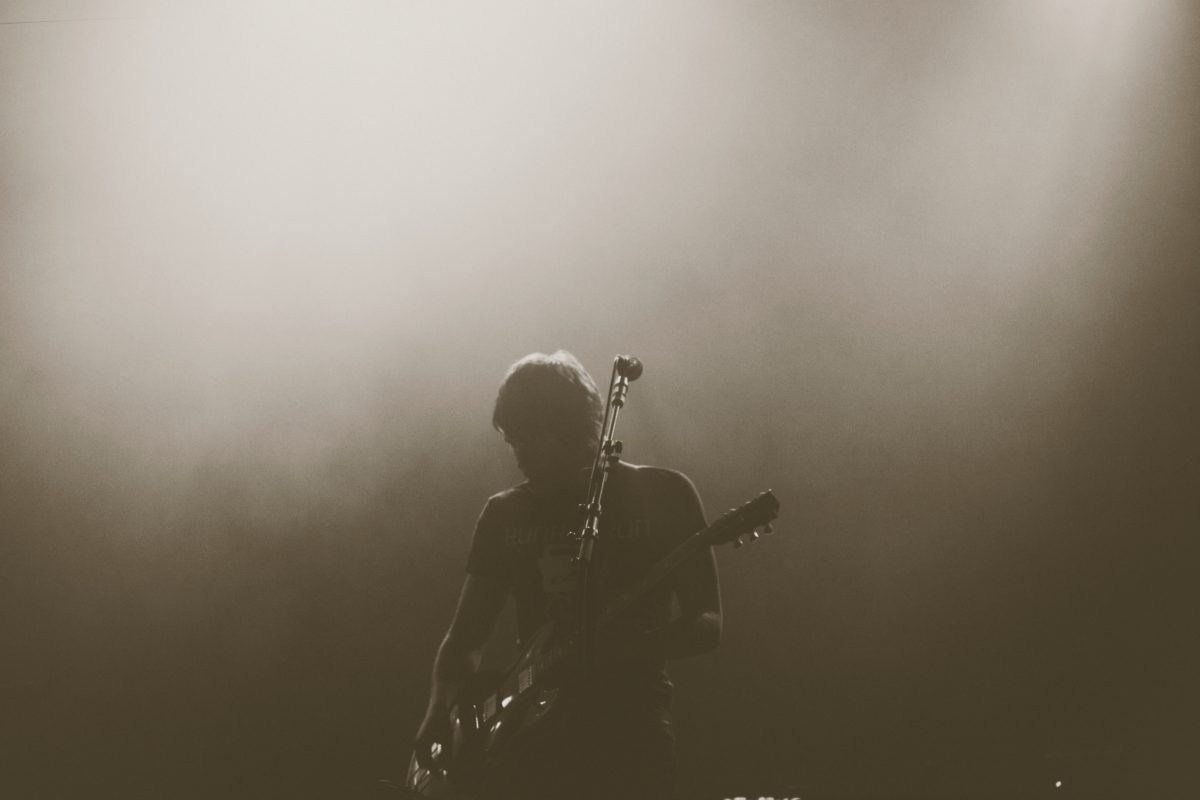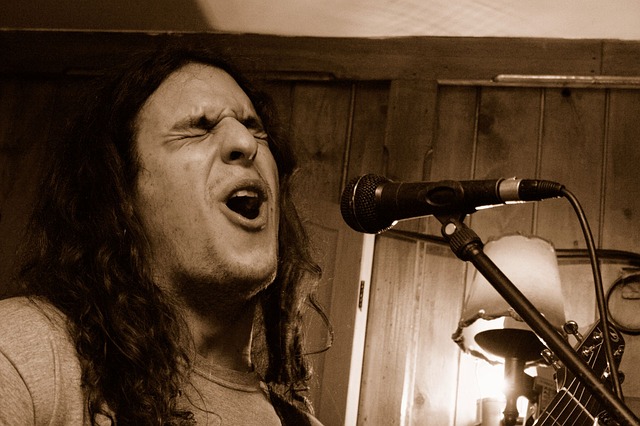A few weeks ago, we spoke about falsetto and mentioned, in an offhand fashion, the existence of a register above falsetto. The whistle register, or flute register as it is sometimes known, is unique from falsetto in that the sound produced has a unique timbre, akin to that of a whistle. Continue reading “The Whistle Register – How High Can You Go?”
Category: Research/Article based news
Undertone singing
A few weeks ago, we talked about overtone singing in preparation for a workshop with Lunatraktors, but while doing our research, we came across another fascinating extend vocal technique. While overtones are high ethereal notes that dance about an octave above the normal singing voice, undertones are their inverse.
Undertones are low, droning sounds that occur under the singer’s voice. These are normally produced through one of two methods. Firstly, we have the use of strohbass, also known as vocal fry, which you might remember from our article on the death growl. By slowing down the vibration of the vocal cords, the note produced becomes creakier, or fried, and produces the lowest register notes. Continue reading “Undertone singing”
Hitting the high notes – Falsetto
We know all about chest voice and head voice but have you heard of “disconnected head voice”, a higher register with a shrill, thinner tone than your usual head voice. This is falsetto, and it often covers the highest notes a person can reach (outside of whistle register at least).
The falsetto voice uses only the thin, leading edges of the vocal cords to generate sound, and although this means it uses less power, it also uses less breath support and can, in time, anecdotal evidence suggests it may cause damage to the throat. Continue reading “Hitting the high notes – Falsetto”
The wonderful world of overtone singing
Last week on this blog, we spoke about beatboxing. In particular, we were really impressed by the ability to make more than one noise at a time. Imagine if singers could do the same…
This practice is called overtone singing and not only is it an amazing skill, it’s becoming more talked about.
A talented singer is able to produce a two notes (or even more): firstly a low base or fundamental note is sung before a second, whistle-like note appears about two octaves above the base note. Continue reading “The wonderful world of overtone singing”
A rough guide to beatboxing
This week, we’re continuing our exploration of extended vocal techniques by looking at one of the most versatile, recognisable and easy to grasp techniques. Beatboxing is the vocal approximation of drum machines and is often tied into the world of hip-hop.
The earliest sounds we may recognise as beatboxing may come from early American rural music, such as eefing, also known as “hillbilly beatboxing”. There are also a collection of sounds in African traditional music that might also be at home in beatboxing, built upon the sounds of loud exhaling. Jazz scat singing also fits in to the forms history, though scat focused more on the approximation of words than the production of percussive sounds.
Vocal percussion appears in popular music such as Paul McCartney’s “That Would Be Something” and Pink Floyd’s “Pow R. Toch H.” Both of these songs were recorded in the late 60s, at a time when hip-hop was just starting to emerge. Continue reading “A rough guide to beatboxing”
A brief history of Yodelling
Few extended vocal techniques could claim to be as famous as the yodel. Often maligned, the yodel is actually a great demonstration of vocal technique involving the shifting between the low chest-voice and the high head-voice. For most people, there is a gap between these two registers. Yodelling takes advantage of this by making quick changes between the two. Continue reading “A brief history of Yodelling”
The Kazoo – A Choir’s Secret Weapon
As part of Bigmouth Chorus, not only are we all fantastic singers but we also possess another marvellous talent. We are masters of a fantastic musical instrument: the kazoo!
In formal terms, the kazoo is a membranophone, an instrument with a membrane which vibrates producing a distinctive tone. Unlike most instruments, you don’t blow into a kazoo, instead you hum into it and a sheet of wax paper acts like a reed, providing a raspy buzz. Continue reading “The Kazoo – A Choir’s Secret Weapon”
The “Death Growl” – An Extended Vocal Technique
Within the confines of heavy metal music, the iconic growl stands out as one of the genres unique defining traits. However, it’s abrasive sound puts many listeners off, and while we’re unlikely to start trying to bring death metal into our choral practice, it’s still a valid extended vocal technique and it’s execution often requires a high degree of technical singing prowess. Continue reading “The “Death Growl” – An Extended Vocal Technique”
Pushing the boundaries of singing
The human voice is an incredibly versatile instrument. Through choir practice, you’ll have heard first-hand some of the incredible things the voice can do but the possibilities are truly endless. From rapping and screaming to beatboxing and complex overtone techniques, no one singer can claim to be a master of every vocal technique, and researchers continue to discover new and exciting forms of singing amongst tribal cultures, even today. Continue reading “Pushing the boundaries of singing”
A brief history of musical notation
As musicians, we’re all familiar with the notes of the heptatonic scale: A B C D E F G. What many of us may not know is the history of these notes and how musical notation got to be the way it is.
The purpose of musical notation is to tell someone what notes should be played without playing the note. They are supposed to be agreed upon reference points to enable music to be shared without being played. Continue reading “A brief history of musical notation”











